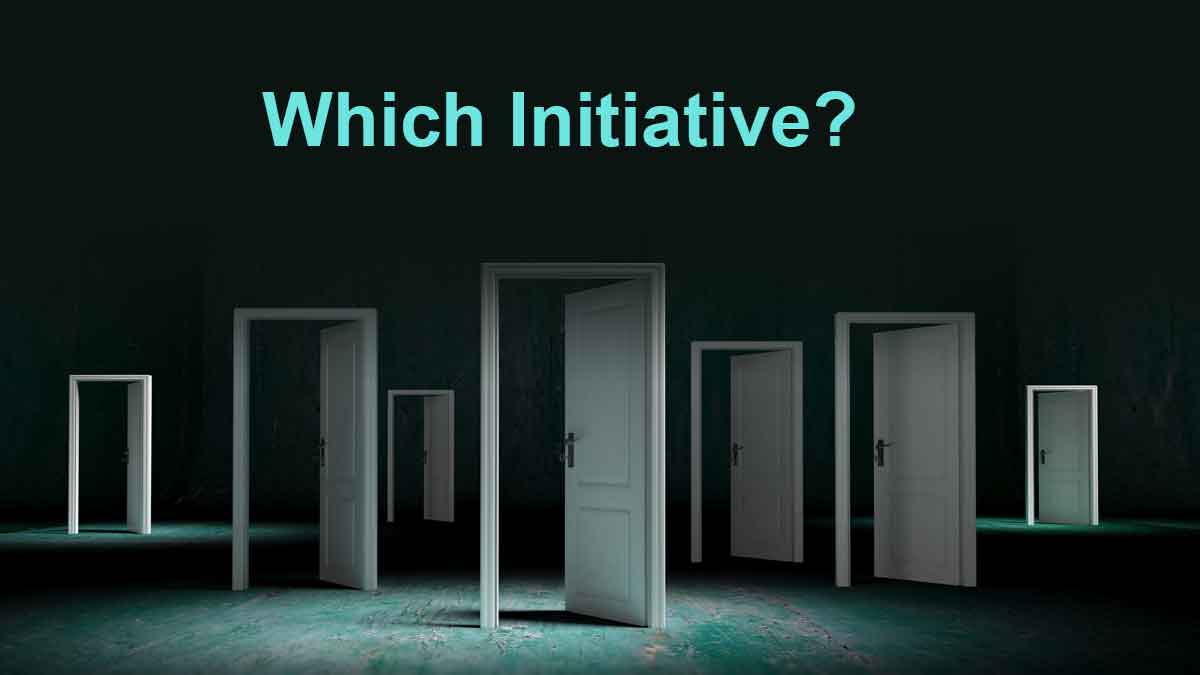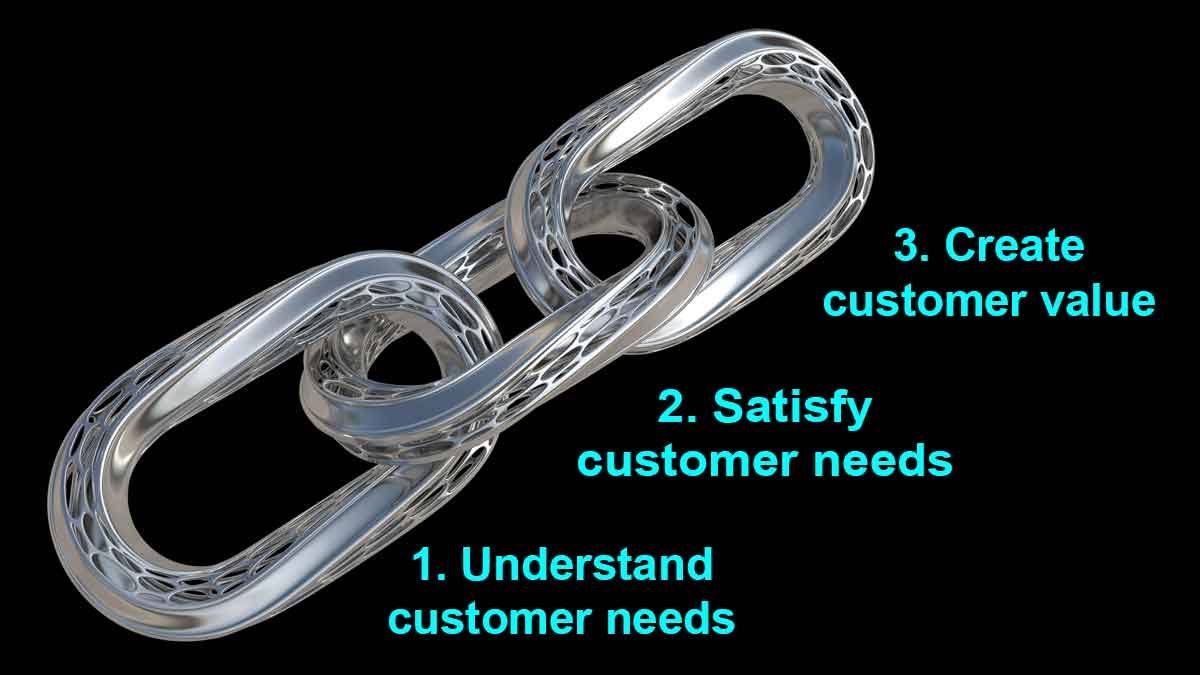Here are your choices: 1) quality upgrades, 2) productivity gains, 3) cost cutting, 4) sales training, 5) customer intimacy, 6) global expansion, 7) acquisitions, and 8) market-facing innovation. There’s only one correct answer and it’s #8: market-facing innovation. The others may be fine initiatives, but they won’t deliver growth that is rapid, profitable and (especially) sustainable. Not so sure about that?
More in article, Is it time for a growth capability diagnostic assessment?
Reliable growth boils down to three linked principles. 1) Your company’s only path to profitable, sustainable organic growth is to create customer value. 2) You only create customer value when you satisfy customer needs that were important and unmet. 3) You must first understand customer needs. You cannot efficiently, effectively improve that which you do not fully comprehend. So it’s time to stop thinking about voice-of-customer as just “one more initiative.” It’s much more. It’s the first link in the growth you want.
More in article, Predict the customer’s experience with modeling.
Qualitative customer interviews let you move from ‘guessing’ to ‘understanding’ customer needs. But proper quantitative interviews provide the insight you need to ‘model’ customer needs. This means you can design your new product with confidence… know how to make intelligent tradeoffs… and even understand how customers will react to your product without seeing a prototype. This works only for B2B and will someday be a common practice. But it’s uncommon today… and a profound competitive advantage.
See how in the article, B2B Customer Needs: Predict the customer’s experience with modeling.
Champions in any sport know which muscle groups to build… with balance. A rock climber with great finger strength also needs superb core strength. You have two primary innovation muscle groups… one to understand customer needs and one to meet those needs with your new products. Your B2B business might be spending tens of millions of R&D on the latter muscle group. Keep these “meeting” muscles in shape… but start building your “understanding” muscles. That’s how you get to the top ahead of competitors.
More in article, New Product Training: Time to Build Growth Muscles.
This is how one client described his experience with one of his company’s initiatives. Take understanding customer needs, for example. Many companies discuss and debate this year after year, but the wheels just keep spinning without traction. Nothing worthwhile happens until a) people are trained, b) metrics are established and c) new behaviors are rewarded. As Peter Drucker said, “Plans are only good intentions unless they immediately degenerate into hard work.”
More in article, New Product Training: Time to Build Growth Muscles
Do you clearly distinguish between technology development and product development? Technology development is science-facing, while product development is market-facing. Technology development turns money into knowledge, and product development turns knowledge back into money. Keep technology and product development separate if you want to avoid confusion and inefficiency. Milestones on a Gantt chart are great for product development, but good luck scheduling technical breakthroughs in your lab.
More in article, Timing is Everything (p6).
As explained by Tony Ulwick in What Customers Want, the term customer “needs” can be confusing. It’s best to separate what customers want into outcomes (their desired end-result, or the “what”) and solutions (your answer to their need, or the “how”). Keep your interview focused on their outcomes, not solutions. If they offer a solution, simply ask, “What would that do for you?” Poof: You’re back into outcome space where you want to be.
More in article, Discovery Interview Blunders that Frustrate Your Customers.
You can triple profit growth by engaging customers in your innovation process. Do this by “moving up” in these 6 levels of customer engagement: 1) our conference rooms, 2) asking our experts, 3) customer survey, 4) qualitative VOC interviews, 5) quantitative VOC interviews, and 6) B2B-optimized VOC interviews. ... Read More
In the best B2B interviews, you ask “What other problems do you see?” or “What would your ideal world look like?” The customer leads the interview—not you—because you never know what they’ll say next. But allow some silence: Don’t fill the void by saying, “for example, would it help if…?” Your patience may be rewarded with a customer need you would never have heard otherwise… one that could lead you to develop a blockbuster product. Silence—and the thinking it allows—can indeed be golden.
More in article, Discovery Interview Blunders that Frustrate Your Customers.
When we train B2B professionals to interview their customers, we tell them to be the student and let the customer be the teacher. After all, customers know their world best and love to demonstrate their expertise… so practice humility. Afraid customers will think less of you if you don’t show how smart you are? Sorry, but I’ve got news: They aren’t thinking of you. They’re thinking of themselves and their ideas. So be a brilliant conversationalist. That’s someone who thinks what the other person says is fascinating.
More in article, Discovery Interview Blunders that Frustrate Your Customers.
I’m still looking for the business that failed—or even suffered—from understanding customers too well. Maybe I should stop looking for this rare “black swan” event? It’s certainly no challenge finding companies that don’t understand customer needs well. Sadly, many also don’t understand how badly their lack of customer insight is stunting their growth. Get this right and you may not be a black swan… but you’ll certainly stand out from the rest of the flock.
See video on B2B voice-of-customer at www.vocforb2b.com.
If you compare a 2-hour in-person voice-of-customer interview to a 2-hour web-conference interview, the former wins. You can interpret body language better, build stronger relationships, and perhaps get a customer tour. But what if it took you and your interview team 10 hours of (mostly non-productive) travel time for the interview? A better question might be, “When is each type of interview most appropriate?” (See interview examples in the video at www.VOCforB2B.com.)
For 7 factors to consider, download our white paper, Virtual VOC (page 8).
Did you buy home-owner insurance… even though it’s unlikely your house will burn down this year? How confident are you that you truly understand customer needs when you develop new products? Our research shows most companies do not. So why not have your teams trained in the latest B2B voice-of-customer insight methods? Think of it as insurance. Or better yet… as a strong preventative, like fire-proofing your house.
See video on B2B voice-of-customer at www.vocforb2b.com.
Keep working harder and smarter, but recognize you’ll move the needle less and less in a system of diminishing returns… like wringing out the last bit of productivity or quality. But when you focus on understanding customer needs better than competitors, your insights and new product innovations—and resulting revenue—will keep coming. Increasing returns. A wonderful system to work hard and smart at.
More in white paper, Catch the Innovation Wave.













